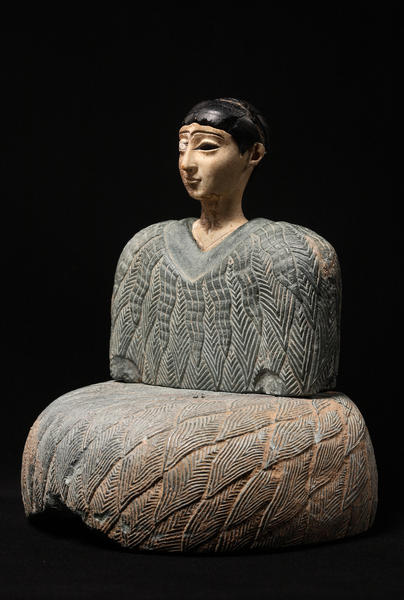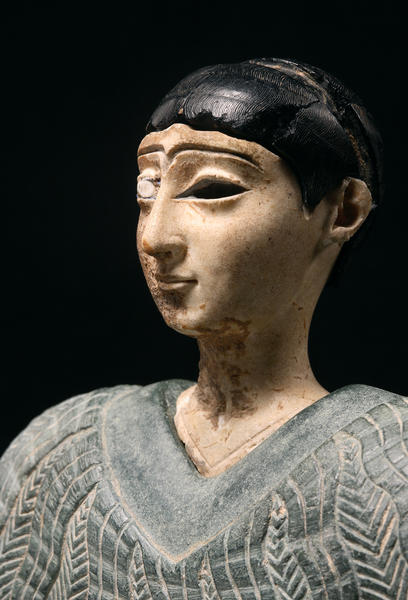Seated Goddess
- Bactrian
- end of the 3rd-early 2nd millennia B.C.
- Stone, bitumen
Catalogue Entry
The style of this stone figure, which shows a seated woman wearing a flounced garment of lambswool, is typical of works from western Central Asia. The figure’s chlorite torso contrasts strikingly with the handsome face and neck of white limestone, and the jet black hair is rendered in bitumen with fine incised lines. Fragments of a similar style of sculpture have recently been discovered in the Margiana region of Turkmenistan, an area where the ancient Namazga culture once flourished and which had close ties with the culture of ancient Elam. The present figure’s garment and the way she sits, with her tips of toes showing on the right, are common to representations of Narunde, sister goddess of the fertility and war goddess Kiririsa, and it is possible that this sculpture depicts a goddess of the same earth-mother type. The figure’s eye sockets were once inlaid with eyes of lapis lazuli and shell or limestone. She seems to stare penetratingly when viewed from the front, but from other angles her countenance seems gentle and smiling.
Seated Goddess
This figure has garments of chlorite, black hair made from bitumen and a face of warm limestone bearing a gentle smile. Her body shape, as though wearing a fur coat, along with the boyish hairstyle, gives her a modern-looking beauty.
It is no coincidence that this robe, known as a kaunakes, has been carved from green stone, a colour expressing the life-force of creation. This enigmatic West Central-Asian goddess may have accompanied and protected the dead as statues of her, along with ritual vessels, have been discovered next to burial sites, although separate from the actual tomb.
She originally rested her white-limestone arms on her knees, and appears to have worn a golden headband in her hair. The two holes in the left side of the deity's bulky lower-body show where her feet were originally visible, in a sideways sitting position.

